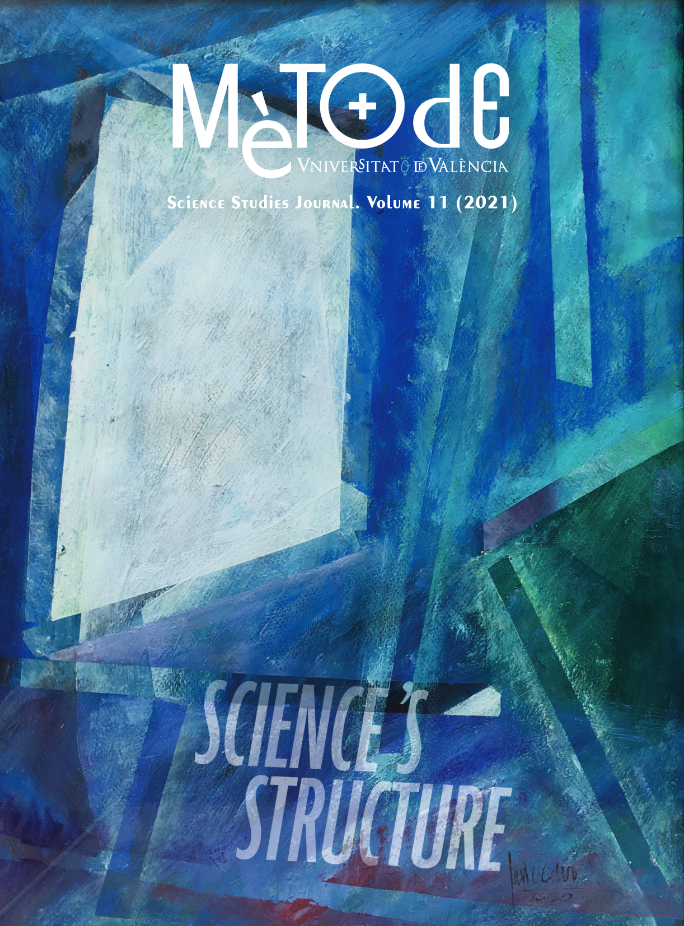Més enllà de l’escalfament global: Oceans estressats globalment a l’antropocè
DOI:
https://doi.org/10.7203/metode.11.16830Paraules clau:
Antropocè, escalfament, acidificació, desoxigenació, canvi global Resum
Resum
La petjada de les activitats humanes sobre el planeta és tan profunda que molts científics ja suggereixen que hem entrat en una nova època geològica, l’antropocè. D’entre aquestes activitats, les que venen acompanyades de grans emissions de diòxid de carboni (CO2) afecten d’una manera global tot el planeta i, sobretot, els oceans. Aquests, a banda d’escalfar-se, es tornen progressivament més àcids i menys oxigenats. En aquest article discutim l’abast d’aquests estressos globals sobre els oceans després de contextualitzar aquest desorbitat augment antropogènic de CO2 i de veure com es distribueix. Acabem amb una discussió sobre possibilitats de mitigació a través dels oceans mateixos, tot recalcant la necessitat imperiosa i urgent d’atacar el problema, sobretot durant aquesta dècada que hem començat.
 Descàrregues
Descàrregues
 Referències
Referències
Alley, R. B. (2014). The two-mile time machine: Ice cores, abrupt climate change, and our future (Updated Edition). Princeton University Press.
Delmas, R. J., Ascencio, J.-M., & Legrand, M. (1980). Polar ice evidence that atmospheric CO2 20,000 yr BP was 50 % of present. Nature, 284, 155–157. https://doi.org/10.1038/284155a0
Friedlingstein, P., Jones, M. W., O’Sullivan, M., Andrew, R. M., Hauck, J., Peters, G. P., Peters, W., Pongratz, J., Sitch, S., Le Quéré, C., Bakker, D. C. E., Canadell, J. G., Ciais, P., Jackson, R. B., Anthoni, P., Barbero, L., Bastos, A., Bastrikov, V., Becker, M., … Zaehle, S. (2019). Global carbon budget 2019. Earth System Science Data, 11, 1783–1838. https://doi.org/10.5194/essd-11-1783-2019
Fuss, S., Canadell, J. G., Peters, G. P., Tavoni, M., Andrew, R. M., Ciais, P., Jackson, R. B., Jones, C. D., Kraxner, F., Nakicenovic, N., Le Quéré, C., Raupach, M. R., Sharifi, A., Smith, P., & Yamagata, Y. (2014). Betting on negative emissions. Nature Climate Change, 4, 850–853. https://doi.org/10.1038/nclimate2392
GBRMPA. (2017). Final report: 2016 coral bleaching event on the Great Barrier Reef. GBRMPA (Great Barrier Reef Marine Park Authority). http://elibrary.gbrmpa.gov.au/jspui/bitstream/11017/3206/1/Final-report-2016-coral-bleaching-GBR.pdf
Global Carbon Project. (2019). Global carbon budget 2019. https://www.globalcarbonproject.org/carbonbudget/19/files/GCP_CarbonBudget_2019.pdf
Gruber, N. (2011). Warming up, turning sour, losing breath: Ocean biogeochemistry under global change. Philosophical Transactions of the Royal Society A: Mathematical, Physical and Engineering Sciences, 369(1943), 1980–1996. https://doi.org/10.1098/rsta.2011.0003
Hoegh-Guldberg, O. (Coord.). (2019). The ocean as a solution to climate change: Five opportunities for action. World Resources Institute. https://www.ourdynamicplanet.com/wp-content/uploads/2019/09/HLP_Ocean_Solution_Climate_Change.pdf
Höhne, N., den Elzen, M., Rogelj, J., Metz, B., Fransen, T., Kuramochi, T., Olhoff, A., Alcamo, J., Winkler, H., Fu, S., Schaeffer, M., Schaeffer, R., Peters, G. P., Maxwell, S., & Dubash, N. K. (2020). Emissions: World has four times the work or one-third of the time. Nature, 579, 25–28. https://doi.org/10.1038/d41586-020-00571-x
IPCC. (2018). Global Warming of 1.5 °C. An IPCC Special Report on the impacts of global warming of 1.5 ℃ above pre-industrial levels and related global greenhouse gas emission pathways, in the context of strengthening the global response to the threat of climate change, sustainable development, and efforts to eradicate poverty. V. Masson-Delmotte, P. Zhai, H.-O. Pörtner, D. Roberts, J. Skea, P.R. Shukla, ... T. Waterfield (Eds.). IPCC. https://www.ipcc.ch/site/assets/uploads/sites/2/2019/06/SR15_Full_Report_High_Res.pdf
IPCC. (2019). IPCC special report on the ocean and cryosphere in a changing climate. H.-O. Pörtner, D. C. Roberts, V. Masson-Delmotte, P. Zhai, M. Tignor, E. Poloczanska, ... N. M. Weyer (Eds.). https://www.ipcc.ch/site/assets/uploads/sites/3/2019/12/SROCC_FullReport_FINAL.pdf
Lüthi, D., Le Floch, M., Bereiter, B., Blunier, T., Barnola, J.-M., Siegenthaler, U., Raynaud, D., Jouzel, J., Fischer, H., Kawamura, K., & Stocker, T. F. (2008). High-resolution carbon dioxide concentration record 650,000-800,000 years before present. Nature, 453, 379–382. https://doi.org/10.1038/nature06949
Machado, L., Magnusson, M., Paul, N. A., Kinley, R., de Nys, R., & Tomkins, N. (2016). Dose-response effects of Asparagopsis taxiformis and Oedogonium sp. on in vitro fermentation and methane production. Journal of Applied Phycology, 28, 1443–1452. https://doi.org/10.1007/s10811-015-0639-9
Mcleod, E., Chmura, G. L., Bouillon, S., Salm, R., Björk, M., Duarte, C. M., Lovelock, C. E., Schlesinger, W. H., & Silliman, B. R. (2011). A blueprint for blue carbon: Toward an improved understanding of the role of vegetated coastal habitats in sequestering CO2. Frontiers in Ecology and the Environment, 9(10), 552–560. https://doi.org/10.1890/110004
Pelejero, C., Calvo, E., & Hoegh-Guldberg, O. (2010). Paleo-perspectives on ocean acidification. Trends in Ecology & Evolution, 25(6), 332–344. https://doi.org/10.1016/j.tree.2010.02.002
Schmidtko, S., Stramma, L., & Visbeck, M. (2017). Decline in global oceanic oxygen content during the past five decades. Nature, 542, 335–339. https://doi.org/10.1038/nature21399
United Nations Environment Programme. (2019). Emissions gap report 2019. UNEP.
Yan, Y., Bender, M. L., Brook, E. J., Clifford, H. M., Kemeny, P. C., Kurbatov, A. V., Mackay, S., Mayewski, P. A., Ng, J., Severinghaus, J. P., & Higgins, J. A. (2019). Two-million-year-old snapshots of atmospheric gases from Antarctic ice. Nature, 574, 663–666. https://doi.org/10.1038/s41586-019-1692-3
Descàrregues
Publicades
Com citar
-
Resum974
-
PDF 441
Número
Secció
Llicència
Drets d'autor (c) 2023 CC BY SA

Aquesta obra està sota una llicència internacional Creative Commons Reconeixement-CompartirIgual 4.0.
![]()
Tots els documents inclosos en OJS són d'accés lliure i propietat dels seus autors.
Els autors que publiquen en aquesta revista estan d'acord amb els següents termes:
- Els autors conserven els drets d'autor i garanteixen a la revista el dret a la primera publicació del treball, llicenciat baix una llicència de Reconeixement-NoComercial-SenseObraDerivada 4.0 Internacional de Creative Commons, que permet a altres compartir el treball amb un reconeixement de l'autoria del treball i citant la publicació inicial en aquesta revista.
- Es permet i s'anima els autors a difondre la versió definitiva dels seus treballs electrònicament a través de pàgines personals i institucionals (repositoris institucionals, pàgines web personals o perfils a xarxes professionals o acadèmiques) una vegada publicat el treball.





